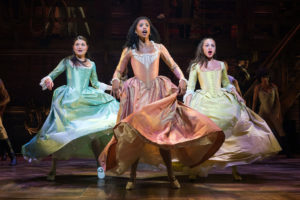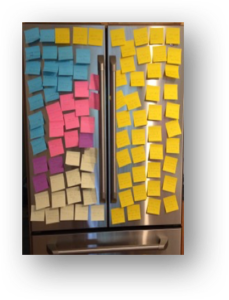At Dawn
By Martha E. Fagan, RN, BSN
I don’t know about you but if it’s evening and thoughts are weighing heavy on my mind, or a problem seems untenable, I’ll think to myself, “I should let this go tonight and get some rest, things will seem better in the morning.”
There’s a magic to dawn as light shines on the brink of a new day AND each new day offers hope and possibilities. If we’re lucky enough to witness the sun rising we can’t help but be reminded of the cycle of time and the dependability of nature. It’s a most beautiful time of day…a moment to soothe our troubled souls. During COVID I’ve found myself waking earlier and often being awake to see a new day breaking, and what seemed insurmountable to me the night before somehow seems more manageable.
As I was watching dawn break yesterday while sitting on my porch, sipping a cup of delicious coffee, I read this beautiful ode to dawn written by Diane Ackerman—poet, essayist, naturalist and author of several highly acclaimed works of nonfiction and poetry, including The Zookeeper’s Wife. I think her words are captivating. I’m sharing the essay in it’s entirety below.
“AT DAWN, the world rises out of darkness, slowly, sense-grain by grain, as if from sleep. Life becomes visible once again. “When it is dark, it seems to me as if I were dying, and I can’t think anymore,” Claude Monet once lamented. “More light!” Goethe begged from his deathbed. Dawn is the wellspring of more light, the origin of our first to last days as we roll in space, over 6.684 billion of us in one global petri dish, shot through with sunlight, in our cells, in our minds, in our myriad metaphors of rebirth, in all the extensions to our senses that we create to enlighten our days and navigate our nights.
Thanks to electricity, night doesn’t last as long now, nor is it as dark as it used to be, so it’s hard to imagine the terror of our ancestors waiting for daybreak. On starless nights, one can feel like a loose array of limbs and purpose, and seem smaller, limited to what one can touch. In the dark, it’s hard to tell friend from foe. Night-roaming predators may stalk us. Reminded of all our delectable frailties, we become vulnerable as prey. What courage it must have taken our ancestors to lie down in darkness and become helpless, invisible, and delusional for eight hours. Graceful animals stole through the forest shadows by night, but few people were awake to see them burst forth, in twilight or moonlight, forbidding, distorted, maybe even ghoulish or magical. Small wonder we personalized the night with demons. Eventually, people were willing to sacrifice anything — wealth, power, even children — to ransom the sun, immense with life, a one-eyed god who fed their crops, led their travels, chased the demons from their dark, rekindled their lives.
Whatever else it is, dawn is always a rebirth, a fresh start, even if familiar routines and worries charge in clamoring for attention. While waking, we veer between dreamy and lucid (from the Latin lux, light). Crossing that threshold each morning, we step across worlds, half a mind turned inward, the other half growing aware. “I’m still a little groggy,” we say, the eighteenth-century word for being drunk on rum. It’s a time of epic uncertainty and vulnerability, as we surface from disorienting dreams and the blindness of keeping eyes shut for many hours. As the eyelids rise to flickering light and the dimly visible, it’s easy to forget where we are, even what we are. Then everything shines. Paths grow easier to see, food easier to spot, jobs easier to tackle with renewed vigor. In rising light, doors and bridges become eye-catching. We may use all our other senses in the dark, but to see we need the sun spilling over the horizon, highlighting everything and pouring a thick yellow vitamin into our eyes. We’re usually too hurried to savor the elemental in our lives: the reeling sun, moon, and stars; prophecy of clouds; ruckus of birdsong; moss brightly blooming; moon shadows and dew; omens of autumn in late summer; fizzy air before a storm; wind chime of leaves; fellowship of dawn and dusk. Yet we abide by forces so old we’ve lost the taste of their spell. It’s as survivors that we greet each day.
When the sun fades in winter, we’re instinctively driven to heights of craft and ingenuity. In the Northeast, rising humans slip from their quilted night-nests and keep warm in heat gusted by fires trapped in metal boxes. Sometimes they venture out wearing a medley of other life-forms: sap from rubber trees attached to the feet; soft belly hair from Mideastern goats wrapped around the head; pummeled cow skin fitted over the fingers; and, padding chest and torso, layers of long thick-walled plant cells that humans find indigestible but insulating and plants use to buttress their delicate tissues — that is, galoshes, wool, leather gloves, and cotton underwear. Some humans go walking, jogging, or biking — to suck more oxygen from the air — which lubricates their joints, shovels fuel into their cells, and rouses their dozy senses. Some of us migrate south like hummingbirds.
Right around Charleston, South Carolina, morning begins to change its mood, winter brings a chill but doesn’t roll up your socks, and the sun boils over the horizon a moment sooner, because the planet’s middle section begins to swell a smidgen there, just enough for pecan light at dawn, snapdragons and camellias too dew-sodden to float scent, and birds tuning their pipes, right on schedule, for a chatterbox chorale.
By January, the northern bird chorus has flown to cucaracha-ville — or, if you prefer it anglicized, palmetto-bug-ville — where swarming insects and other lowlife feed flocks of avian visitors. There they join many of the upright apes they left behind: “snow birds” who also migrate to the land of broiling noons. We may travel far in winter, but our birds travel with us.
Painting its own time zone, its own climate, dawn is a land of petrified forests and sleeping beauties, when dry leaves, hardened by frozen dew, become ghost hands, and deer slouch through the woods, waiting for their food to defrost. Part of the great parentheses of our lives, dawn summons us to a world alive and death-defying, when the deepest arcades of life and matter beckon. Then, as if a lamp were switched on in a dark room, nature grows crisply visible, including our own nature, ghostly hands, and fine sediment of days.”
During these difficult days may each dawn remind us of what we still have and the light that surrounds our day.
Martha Fagan is the Vice Chair of the Bacon Free Library. She may be reached through her email at mefagan.bfl@gmail.com




 Make a Gratitude Jar and place it in a conspicuous place for all the family to see…the kitchen island, the coffee table or near one of the entrances to your home. Leave some slips of paper & a pen nearby so you can jot down something you’re grateful for…your morning walk, your garden, or your Amazon food delivery…the small simple things in your day.
Make a Gratitude Jar and place it in a conspicuous place for all the family to see…the kitchen island, the coffee table or near one of the entrances to your home. Leave some slips of paper & a pen nearby so you can jot down something you’re grateful for…your morning walk, your garden, or your Amazon food delivery…the small simple things in your day. Surprise someone you love by Gratitude Bombing them. This is so much fun! Get some sticky notes and write all the things you love and appreciate about the person—little things like “I’m grateful for your hugs”, “I love your smile”, “I’m grateful you cut the grass”, “Thank you for helping the kids with their homework”, “I’m grateful you make the coffee!” You get the idea…then stick the little notes in places to surprise them. I posted them all on the refrigerator doors one morning.
Surprise someone you love by Gratitude Bombing them. This is so much fun! Get some sticky notes and write all the things you love and appreciate about the person—little things like “I’m grateful for your hugs”, “I love your smile”, “I’m grateful you cut the grass”, “Thank you for helping the kids with their homework”, “I’m grateful you make the coffee!” You get the idea…then stick the little notes in places to surprise them. I posted them all on the refrigerator doors one morning.

